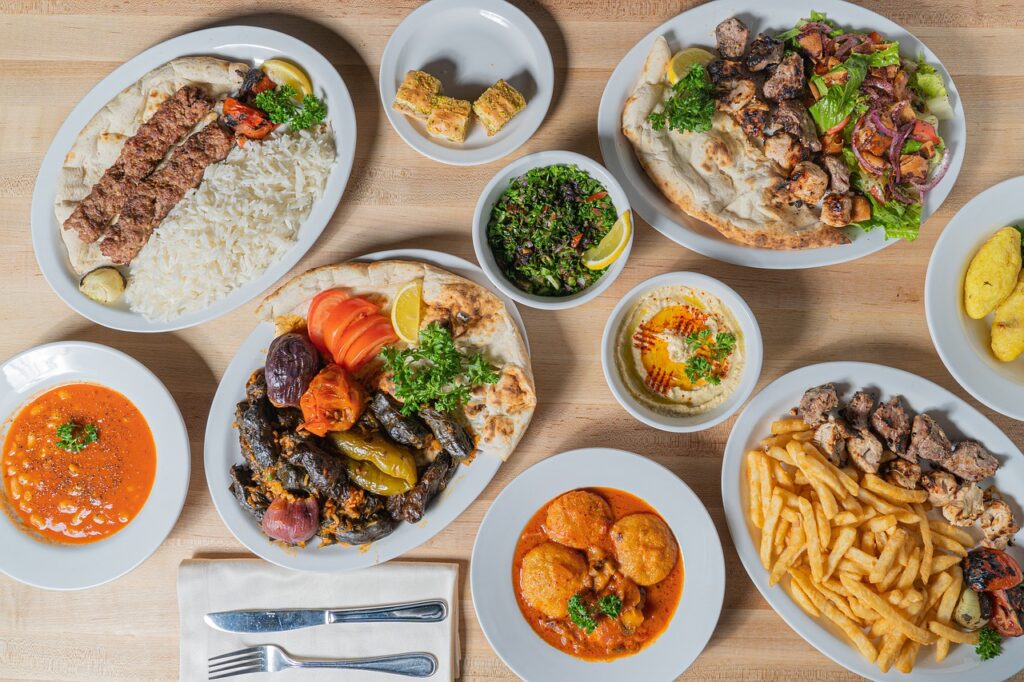Traditional Turkish food is a rich tapestry of flavors that reflects the country’s diverse history. You can explore a world of delicious dishes that have been passed down through generations. From savory kebabs to sweet baklava, each meal tells a story and brings people together.
The key to enjoying Turkish cuisine lies in understanding its key ingredients and cooking methods. Fresh vegetables, spices, and grains play significant roles in many recipes, contributing to the distinct taste and aroma. Each dish offers a unique glimpse into Turkish culture, making your culinary journey both enjoyable and educational.
Key Takeaways
- Turkish cuisine is influenced by a mix of cultures and traditions.
- Fresh ingredients and spices are central to most dishes.
- Each meal represents a part of Turkey’s rich history.
History of Turkish Cuisine
Turkish cuisine has a rich and diverse background, shaped by various cultures and historical events. The influences of the Ottoman Empire and the distinct regional differences play a major role in what you know today as traditional Turkish food.
Influence of Ottoman Empire
The Ottoman Empire, at its height, spanned three continents and included many cultures. This expansive reach brought together different culinary traditions. You can see this in dishes that combine flavors from the Middle East, Mediterranean, and even Central Asia.
Royal kitchens were a significant source of innovation. Chefs created complex dishes, often using spices and ingredients from across the empire. Meals were not just about sustenance; they were events meant to showcase wealth and status.
Many famous Turkish dishes, like kebabs and pilafs, have roots in this period. The Ottoman influence led to the creation of unique recipes that are still enjoyed today.
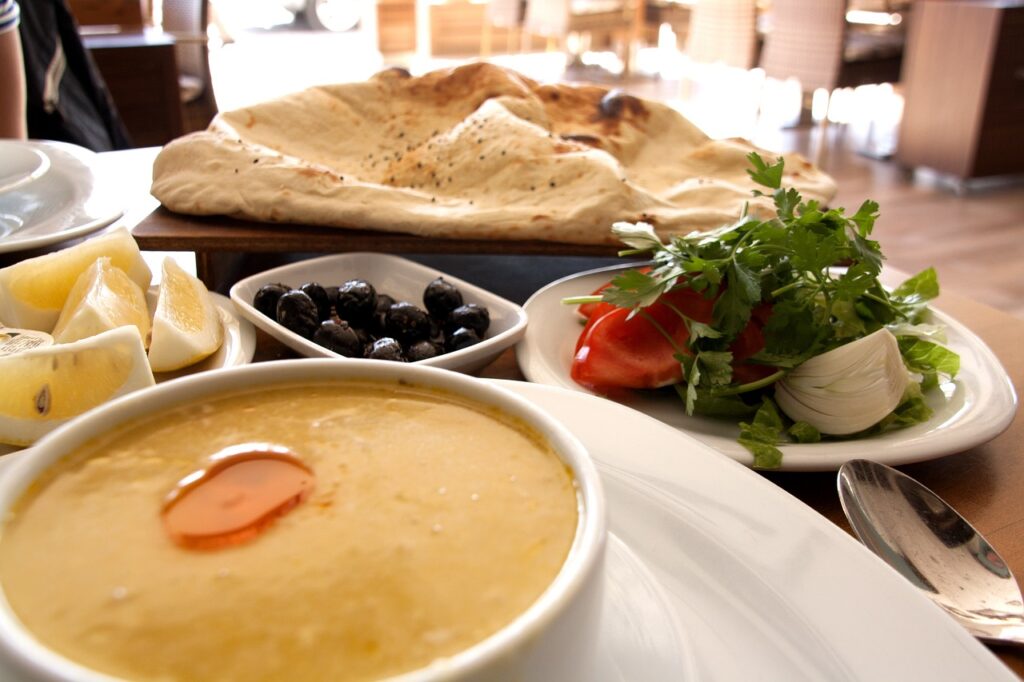
Regional Variances
Turkey’s geography influences its cuisine significantly. Each region offers unique ingredients and flavors, creating a culinary map that you can explore.
In the Aegean region, olive oil and fresh vegetables dominate the diet. You’ll find dishes like zeytinyağlı (vegetables cooked in olive oil) here. In contrast, the Southeast features spicier dishes, such as kebabs and spiced rice.
Moreover, the Black Sea region is known for its fish and corn-based dishes. Each area not only reflects local ingredients but also the history and culture of its people. This diversity enriches Turkish cuisine, making it vibrant and varied.
Key Ingredients and Spices
Traditional Turkish cuisine uses a variety of staple ingredients and spices. These components are essential for creating rich flavors and textures in dishes.
Staple Ingredients
Some key ingredients in Turkish cooking include:
- Rice: A common side dish, often served with meat or vegetables.
- Bread: Typically, pide or lavash, bread is an essential part of every meal.
- Meats: Lamb, beef, and chicken are frequently used, often grilled or stewed.
- Legumes: Beans and lentils are popular for their protein content.
- Dairy: Yogurt and cheese, like feta, are important for adding creaminess.
These staples form the base of many dishes, helping to create balanced and satisfying meals. Fresh vegetables, like eggplants, peppers, and tomatoes, also play a critical role in Turkish flavor profiles.
Commonly Used Spices
Turkish cuisine features a wide array of spices, which add depth to dishes. Some commonly used spices include:
- Cumin: Adds a warm, earthy flavor.
- Paprika: Offers a sweet or smoky taste, depending on the type.
- Mint: Fresh or dried, enhances both meat and vegetable dishes.
- Sumac: A tangy spice that brings brightness to salads and marinades.
- Black Pepper: Used for heat and flavor.
These spices create rich and layered tastes, making each dish unique. Turkish cooking balances these flavors carefully to highlight the freshness of ingredients.
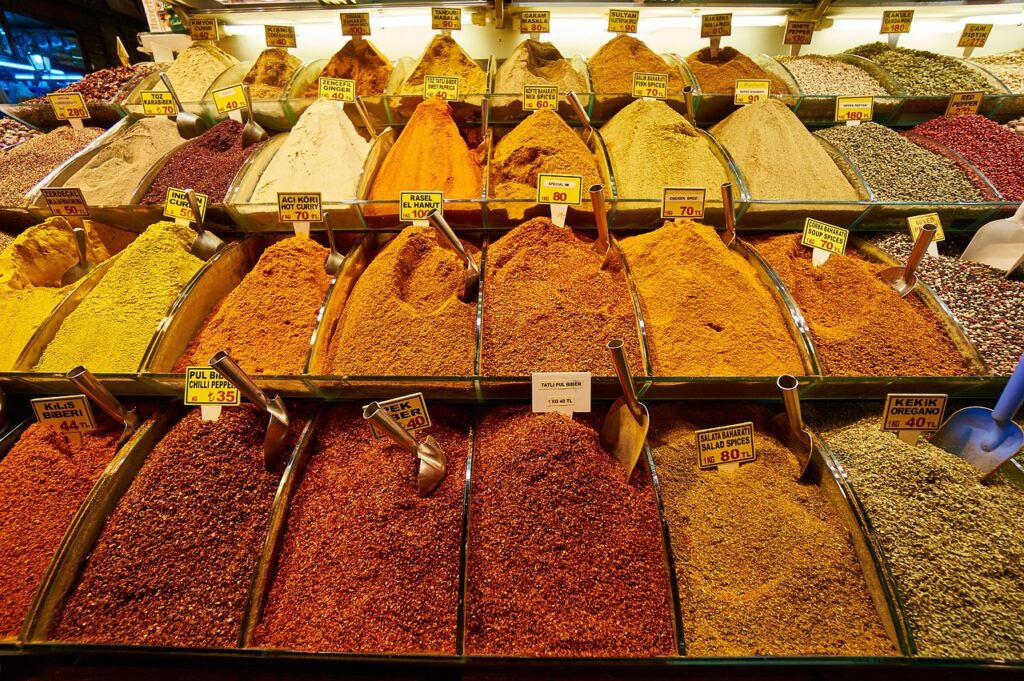
Popular Turkish Dishes
Turkey is known for its rich and diverse cuisine. The following dishes highlight the unique flavors and ingredients that make Turkish food special.
Meze and Appetizers
Meze refers to small dishes served before the main meal. They are perfect for sharing and offer a variety of tastes. Common meze options include:
- Hummus: A spread made from chickpeas, tahini, lemon juice, and garlic.
- Muhammara: A spicy dip made with walnuts and red peppers.
- Baba Ghanoush: A smoky eggplant dip mixed with yogurt and spices.
These appetizers are often enjoyed with pide or Turkish bread. You might also find stuffed grape leaves (yaprak sarması) filled with rice and spices. Another popular choice is feta cheese served with olives.
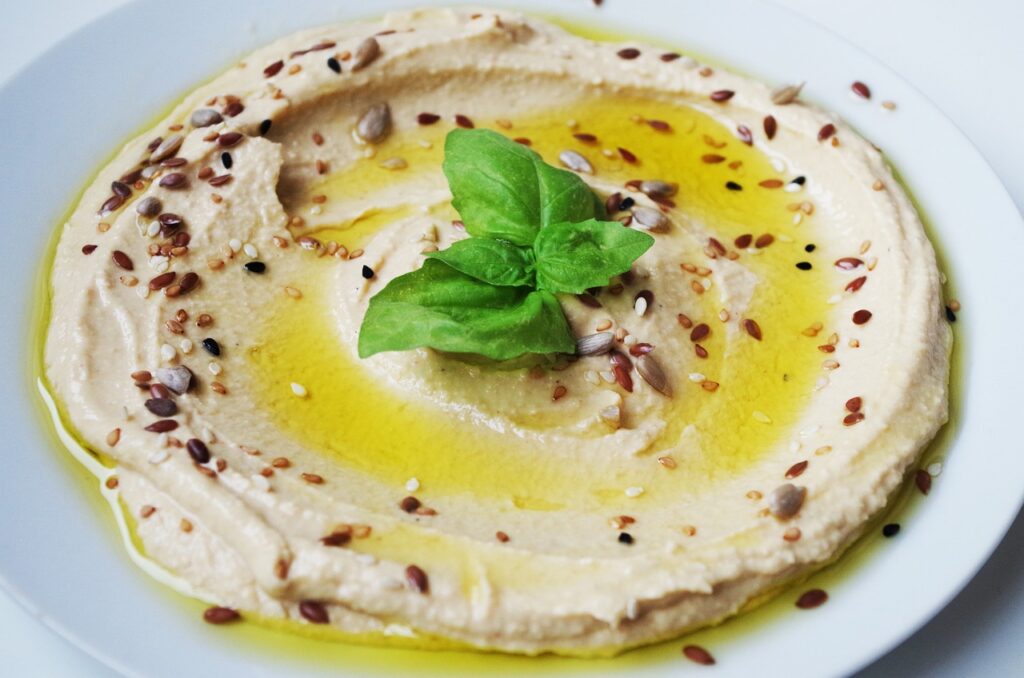
Main Courses
Main courses in Turkish cuisine often feature grilled meats and stews. One of the most popular dishes is Kebab, which comes in many forms.
- Adana Kebab: Spicy minced meat grilled on skewers.
- Döner Kebab: Thinly sliced meat cooked on a vertical rotisserie.
Another classic is Lahmacun, a thin flatbread topped with minced meat, herbs, and vegetables. For a hearty option, try Kısır, a bulgur salad mixed with parsley, tomatoes, and spices. Manti, Turkish dumplings filled with meat, are often served with yogurt and garlic sauce.
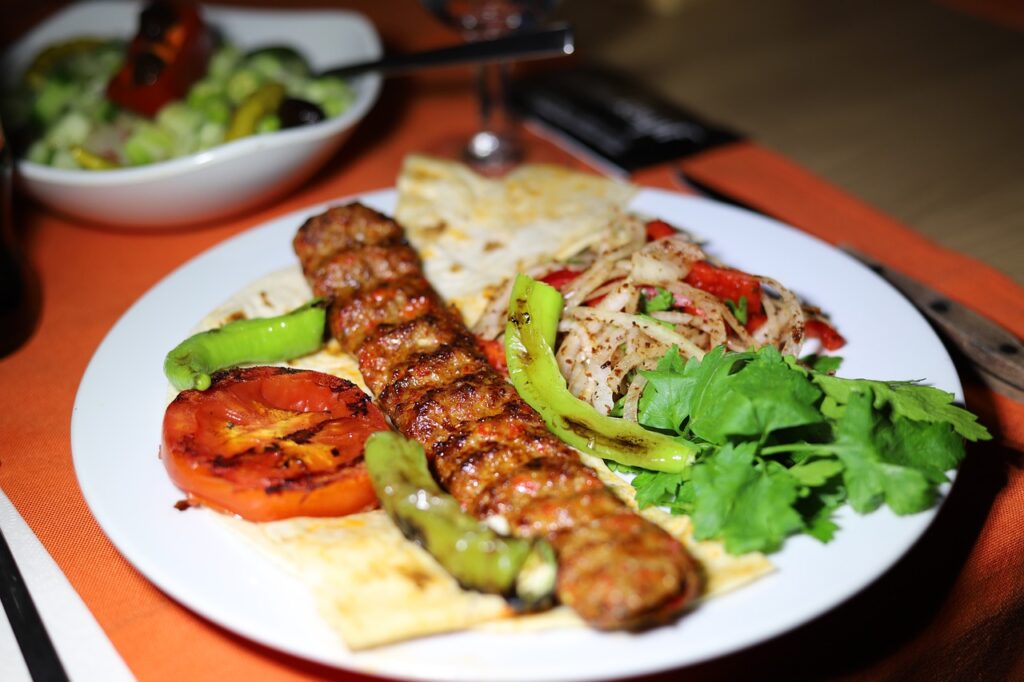
Desserts and Sweets
Turkish desserts are often rich and sweet, making them a favorite at the end of a meal. Baklava is the most famous, made with layers of filo pastry, nuts, and honey syrup.
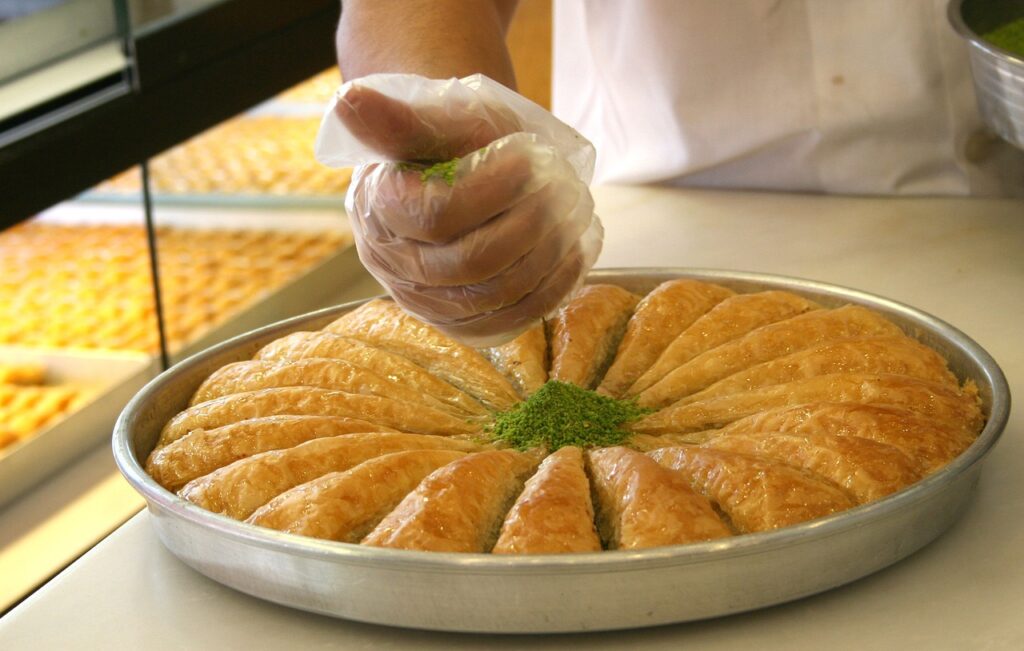
Another popular dessert is Künefe, a cheese pastry soaked in syrup and served warm. You might also enjoy ** Turkish Delight** (lokum), a chewy sweet made from sugar and starch, often flavored with rose water or lemon.
Sütlaç is a creamy rice pudding topped with cinnamon. Revani, a semolina cake soaked in syrup, adds another sweet choice to the menu.
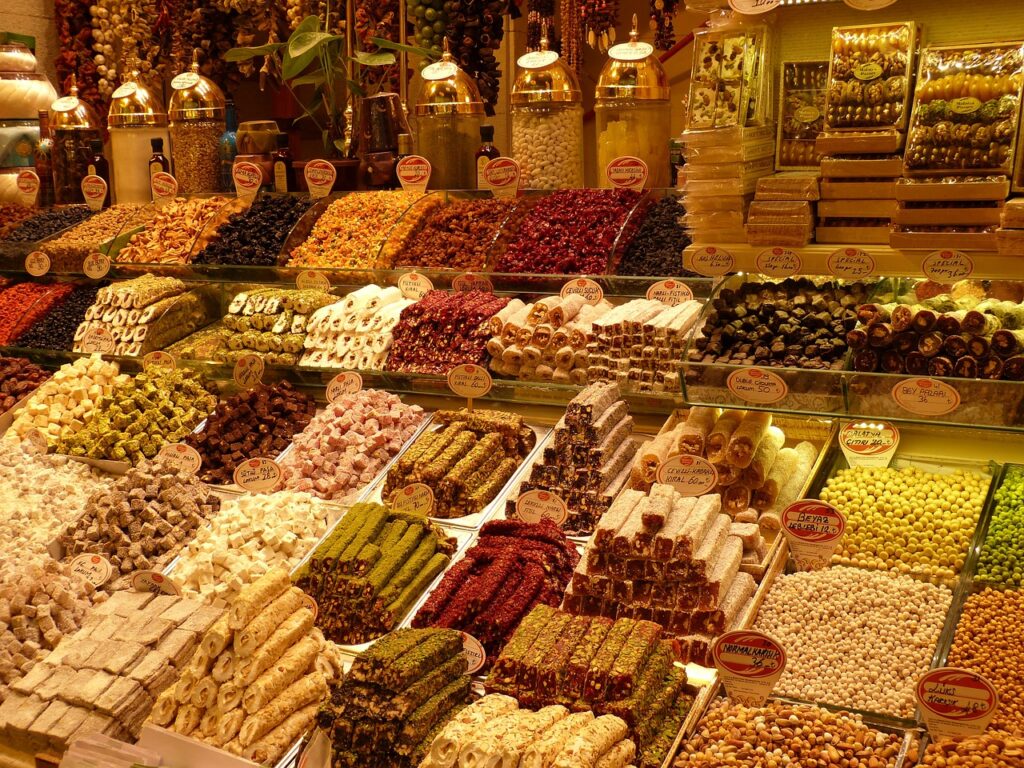
Street Foods
Street food is a big part of Turkish culture, and you’ll find delicious options throughout the country. One popular choice is Simit, a sesame-covered bread that is crispy on the outside and soft on the inside.
Kokoreç consists of grilled intestines seasoned with spices, often served in a sandwich. For something warm, you might try Pide, a Turkish flatbread topped with cheese, meat, or vegetables.
Midye Dolma are stuffed mussels, popular along the coast, filled with rice and spices. Finally, don’t miss Döner Sandwiches, a quick meal with thinly sliced meat, vegetables, and sauce in pita bread.
Traditional Cooking Methods
Traditional Turkish cuisine uses unique cooking methods that enhance flavors and bring out the best in ingredients. Two prominent techniques are grilling and baking, each with its special practices and dishes.
Grilling and Kebabs
Grilling is a vital aspect of Turkish cooking. It often involves marinating meat in a mix of spices, yogurt, or olive oil to make it tender and flavorful. Kebabs are perhaps the most famous dishes resulting from this technique.
You can find various types of kebabs, including:
- Shish Kebab: Skewered and grilled cubes of meat, usually lamb or chicken.
- Adana Kebab: A spiced ground meat mixture, shaped onto skewer and grilled.
- Döner: Layers of seasoned meat cooked on a vertical rotisserie.
Grilling typically takes place over an open flame, which adds a smoky flavor that many enjoy. The use of fresh vegetables, such as peppers and tomatoes, is common alongside grilled meats.
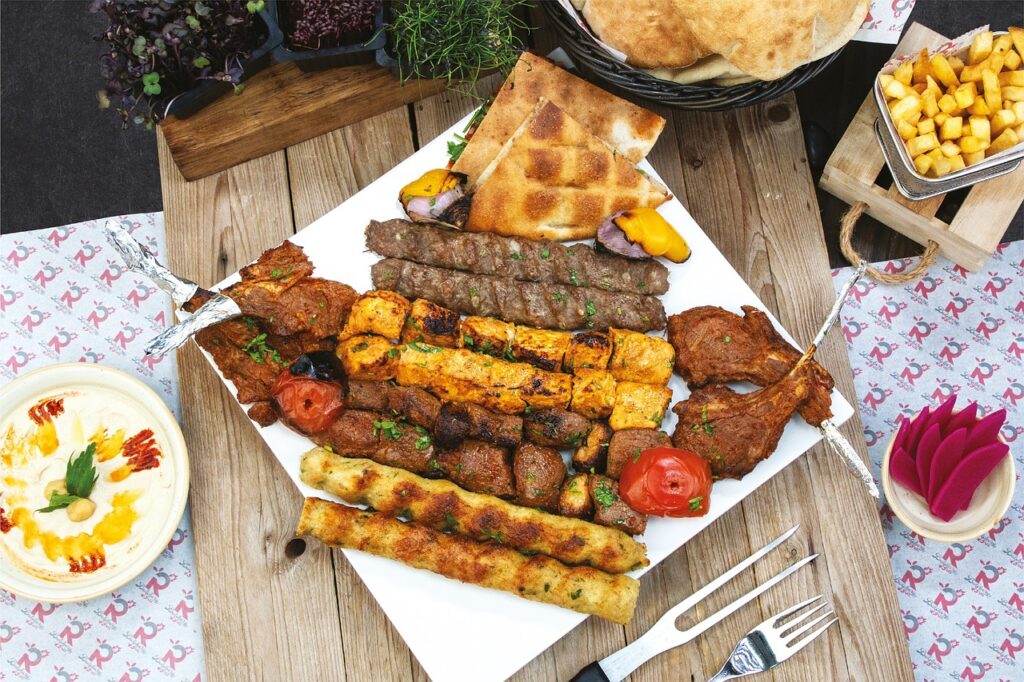
Baking Techniques
Baking is equally important in Turkish cuisine and showcases a wide range of breads and pastries. Traditional ovens, called tandir, are often used for this purpose. They are clay ovens heated with wood or charcoal, giving unique flavors to baked goods.
Common baked items include:
- Pide: A boat-shaped flatbread topped with cheese, meat, or vegetables.
- Lahmacun: A thin, round flatbread topped with a mix of minced meat, vegetables, and spices.
- Simit: A sesame-crusted bread that is a popular street food.
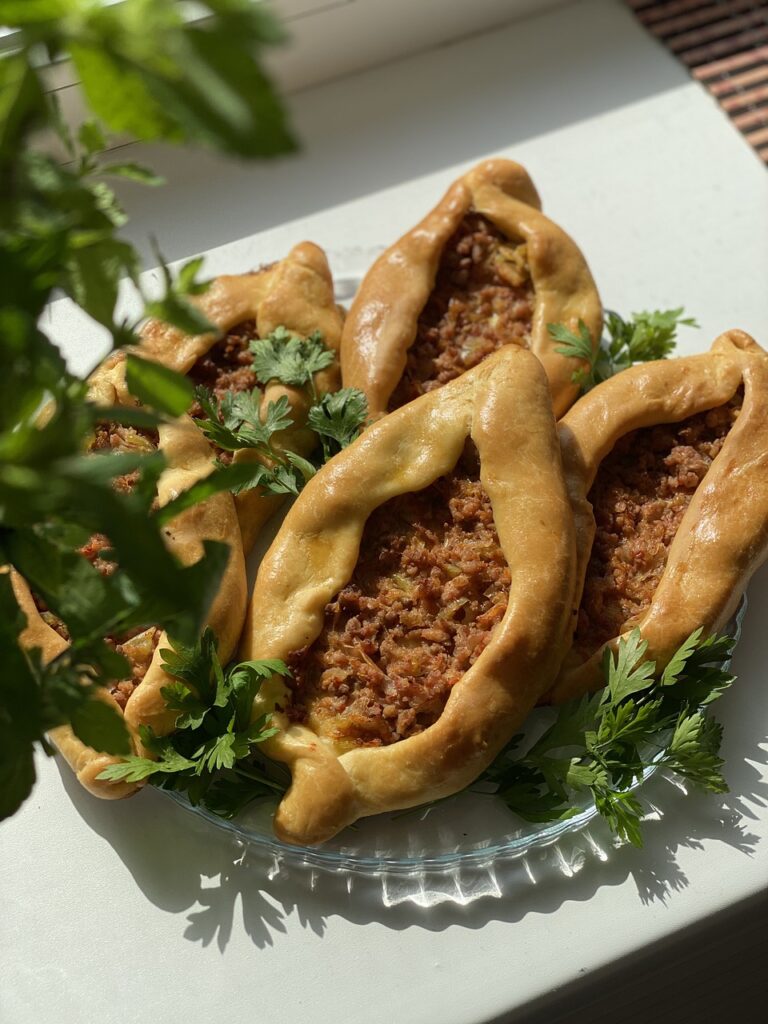
Baking involves specific techniques that ensure a crispy crust while maintaining softness inside. The choice of ingredients and precise temperature control are essential for achieving the best results.
Conclusion
In conclusion, traditional Turkish food is more than just a meal – it’s a journey through the country’s rich history, diverse regions, and cultural influences. Each dish, from savory kebabs to sweet desserts like baklava, tells a story of centuries-old traditions and ingredients. Whether you’re enjoying a street food snack or a carefully prepared meal, Turkish cuisine offers something for everyone, inviting you to explore its flavors and cooking methods. Embrace the vibrant tastes and make your culinary experience both delicious and unforgettable!
For those planning a trip to Turkey, don’t miss our detailed Cappadocia tours guide, uncovering best hotels in Cappadocia, and Cappadocia itinerary to make the most of your adventure in this breathtaking region.
* Affiliate Disclaimer: Some of the links in our articles are affiliate links. This means that if you click on the link and make a purchase, we may earn a commission at no additional cost to you. We only recommend products and services that we believe in and that we think will be useful for our readers.

